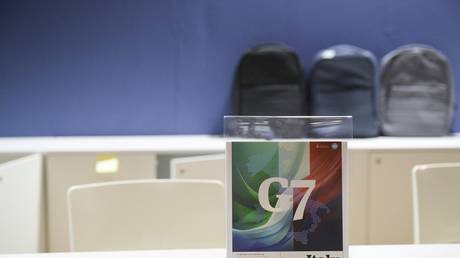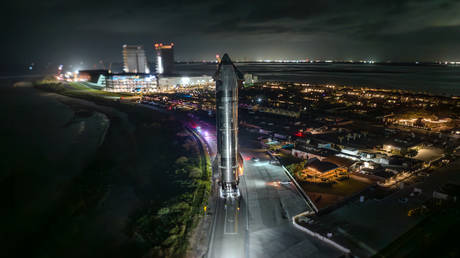
Western powers are at odds over who should carry the risks of tapping into Russian assets, several outlets have reported
Leaders of the G7 intend to back a US plan to provide $50 billion in aid for Ukraine through a loan issued against frozen Russian assets, before finalising some contentious parts of the plan, according to media reports.
Washington’s idea is to use future profits from seized Russian assets to pay interest on the proposed loan. Leaders of the G7 club of nations will approve the arrangement in principle during this week’s summit in Apulia, Italy, according to news outlets including Bloomberg, Agence France-Presse (AFP) and Politico.
Disagreements remain as to who will carry the loan risks if Western powers lose control over the Russian assets.
”If the Russian assets are unfrozen or the proceeds from the Russian assets are not enough to finance the loan, then we’ll have to consider how to share the load,” an Elysee Palace official told AFP.
Most of the frozen assets, which are worth some $300 billion, are parked in the EU. Moscow has said it would treat any attempt to tap into them as theft, and would retaliate. American officials reportedly want the Europeans to carry the burden if the plan goes wrong.
”What Washington is proposing is, ‘We [the US]take a loan, Europe takes all the risk, you [Europe] pay the interest, and we [the US]use the money for a US-Ukraine fund,’” a senior European diplomat told Politico. “We might be stupid but we’re not that stupid.”
The US reportedly argues that any deal that puts the obligation to pay on Washington’s shoulders would have to be ratified by Congress, and may get stalled there.
The Europeans are also concerned that if the money is allocated by the US directly or through an international financial institution controlled by Washington, such as the World Bank, it would primarily go to American companies, not European ones, the outlet said.
READ MORE: Ukraine is a ‘gold mine’ – US senator
Disputed details of the financial scheme may take months to negotiate, according to insiders. Western leaders hope to have a final deal before the US presidential election in early November. Officials are concerned that later on, a possible victory by Donald Trump could derail the entire project.




